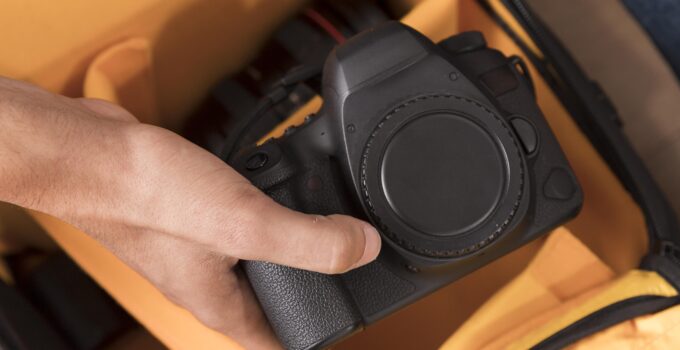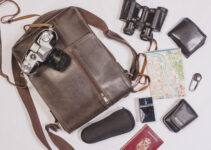Table of Contents
ToggleHave you ever wondered how to safely package a camera lens for shipping? Ensuring the protection of a delicate and expensive camera lens during transit is crucial to prevent any potential damage.
Proper packaging not only preserves the lens but also guarantees its arrival in perfect condition to the recipient.
This guide will walk you through the essential steps of preparing your camera lens for shipping, including selecting the right materials, securing the lens, and properly sealing the package.
By following these guidelines, you can ship your camera lens with confidence, knowing it will be well-protected throughout its journey.
Is it worth to pack a camera lens for shipping?
Packing a camera lens for shipping is absolutely worth the effort due to its delicate nature and high value.
Camera lenses contain intricate components that can easily be damaged by impact or environmental factors like moisture and dust. Proper packing ensures that the lens arrives at its destination in optimal condition, preserving its functionality and resale value.
To pack a lens securely, start by wrapping it in multiple layers of bubble wrap to cushion against shocks.
Place the wrapped lens in a sturdy, appropriately sized box, filling any gaps with packing peanuts or crumpled paper to prevent movement. Seal the box with strong packing tape and label it as fragile.
Investing time in proper packing minimizes the risk of damage, potentially saving you from costly repairs or replacements. It also helps maintain your professional reputation if shipping lenses as part of a business.
Overall, careful packing is a small effort that yields significant benefits.
Things to know before packing a camera lens for shipping
Before packing a camera lens for shipping, there are several key considerations to ensure its safe arrival:
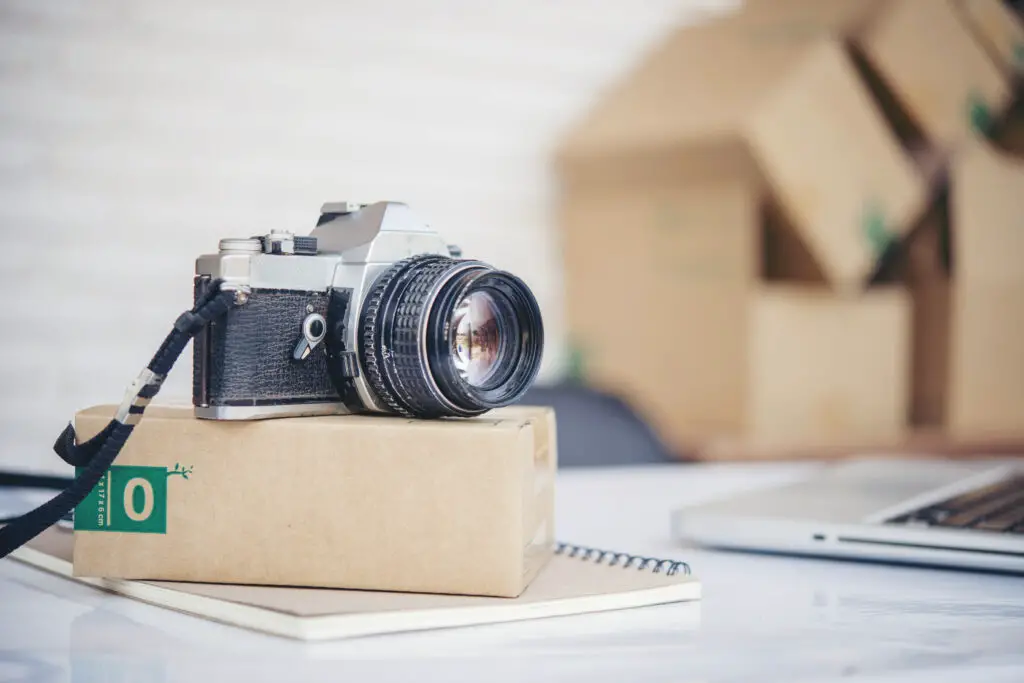
- Clean the Lens: Remove any dust or smudges to prevent damage during transit.
- Use Proper Materials: Gather bubble wrap, packing peanuts, sturdy boxes, and strong packing tape.
- Secure the Lens Cap: Ensure both front and rear lens caps are securely in place to protect the glass.
- Bubble Wrap: Wrap the lens in multiple layers of bubble wrap, focusing on the glass elements for extra protection.
- Choose the Right Box: Select a box slightly larger than the wrapped lens to allow space for padding.
- Fill Gaps: Use packing peanuts or crumpled paper to fill any gaps in the box, preventing the lens from moving.
- Label as Fragile: Clearly mark the box as fragile to alert handlers to take extra care.
- Insurance: Consider purchasing shipping insurance for added protection against loss or damage.
Following these steps ensures the lens is well-protected during shipping.
Here, how to put a tripod strap on a camera bag?
How to pack a camera lens for shipping?
Packing a camera lens for shipping involves several careful steps to ensure its safety:
- Clean and Cap: Clean the lens to remove dust, then securely attach the front and rear lens caps.
- Bubble Wrap: Wrap the lens in several layers of bubble wrap, ensuring thorough coverage, especially over the glass elements.
- Secure Wrapping: Use tape to secure the bubble wrap, preventing it from unraveling.
- Inner Box: Place the wrapped lens in a small, sturdy box with additional padding (e.g., packing peanuts or crumpled paper) to prevent movement.
- Outer Box: Put the inner box into a larger box, filling any gaps with more padding material to absorb shocks.
- Seal: Use strong packing tape to seal the outer box securely.
- Label: Clearly mark the outer box with “Fragile” and “Handle with Care” labels.
- Insurance: Consider purchasing shipping insurance for added protection.
These steps help ensure the lens reaches its destination undamaged.
How to package a camera lens for shipping?
To package a camera lens for shipping safely, follow these steps:
- Clean and Cap: Ensure the lens is clean and both front and rear caps are securely in place.
- Wrap in Bubble Wrap: Wrap the lens in multiple layers of bubble wrap, particularly around the glass elements.
- Tape Securely: Secure the bubble wrap with tape to keep it in place.
- Place in a Small Box: Put the wrapped lens in a small, sturdy box. Fill any remaining space with packing peanuts or crumpled paper to prevent movement.
- Prepare the Outer Box: Choose a larger, sturdy box. Line the bottom with cushioning material.
- Insert and Pad: Place the small box into the larger box, surrounding it with more packing material on all sides to absorb shocks.
- Seal and Label: Seal the outer box with strong packing tape and label it as “Fragile” and “Handle with Care.”
- Consider Insurance: Purchase shipping insurance for extra protection.
These steps ensure the lens is well-protected during transit.
9 steps to package a camera lens for shipping
1. Clean the Lens
Before packing the lens, thoroughly clean it to remove dust, dirt, and fingerprints. Use a microfiber cloth and lens cleaning solution to gently wipe the glass elements.
Cleaning the lens ensures that no abrasive particles are trapped during shipping, which could scratch or damage the delicate surfaces.
Additionally, cleaning the lens prior to packing helps maintain its value and ensures that it is ready for use upon arrival.
Here, what size dry bag for camera?
2. Secure Lens Caps
Make sure both the front and rear lens caps are securely attached. Lens caps protect the glass elements from scratches, dust, and other potential damage.
If the lens caps are loose or missing, consider using temporary protective covers or purchasing replacements. Ensuring that the caps are securely in place is a crucial step in safeguarding the most vulnerable parts of the lens during transit.
3. Wrap in Bubble Wrap
Wrap the lens in multiple layers of bubble wrap to cushion it against shocks and impacts. Use small-bubble bubble wrap for the initial layers, focusing on the lens barrel and glass elements.
Then, use larger-bubble wrap for additional protection. The key is to create a thick, padded layer that will absorb any jolts or vibrations during shipping. Secure the bubble wrap with tape to prevent it from unwrapping.
4. Use a Small Sturdy Box
Place the wrapped lens into a small, sturdy box that provides a snug fit. The box should be made of durable cardboard and free from any damage.
Fill any empty spaces with packing peanuts, crumpled paper, or foam inserts to immobilize the lens. This inner box acts as the first line of defense, preventing the lens from moving and providing an additional layer of protection.
5. Prepare the Outer Box
Select a larger outer box that can accommodate the inner box with additional padding on all sides. The outer box should be made of strong, double-walled cardboard to withstand the rigors of shipping. Line the bottom of the outer box with a layer of cushioning material, such as packing peanuts or bubble wrap. This creates a shock-absorbing base for the inner box.
6. Insert and Pad the Inner Box
Place the small, padded box containing the lens into the center of the larger outer box. Surround the inner box with more packing material on all sides, ensuring that there are at least two inches of padding between the inner and outer boxes.
This padding acts as a buffer, absorbing shocks and vibrations during transit. The goal is to prevent any direct impact on the lens.
Here, what does camera and money bag emoji means on tinder?
7. Seal the Outer Box
Use strong packing tape to seal the outer box securely. Reinforce all seams and edges with tape to prevent the box from opening during shipping. If the box has flaps, tape them down thoroughly.
For added security, consider using a tamper-evident tape that will show if the box has been opened. Proper sealing ensures that the package remains intact throughout its journey.
8. Label as Fragile
Clearly mark the outer box with “Fragile” and “Handle with Care” labels. Use bold, easily readable labels on multiple sides of the box to ensure that handlers are aware of the delicate contents.
Including directional arrows indicating “This Side Up” can help ensure the package is kept in the correct orientation. Proper labeling encourages careful handling and reduces the risk of damage.
9. Consider Shipping Insurance
Finally, consider purchasing shipping insurance for added protection. Shipping insurance covers the value of the lens in case it is lost, stolen, or damaged during transit.
Check with the shipping carrier for available insurance options and choose a coverage amount that reflects the lens’s value.
While it may add to the shipping cost, insurance provides peace of mind and financial protection against potential mishaps.
5 Methods to pack a camera lens for shipping
1. Double-Box Method
The double-box method involves using two boxes to create multiple layers of protection for the camera lens. First, wrap the lens in several layers of bubble wrap, ensuring all parts are well-cushioned.
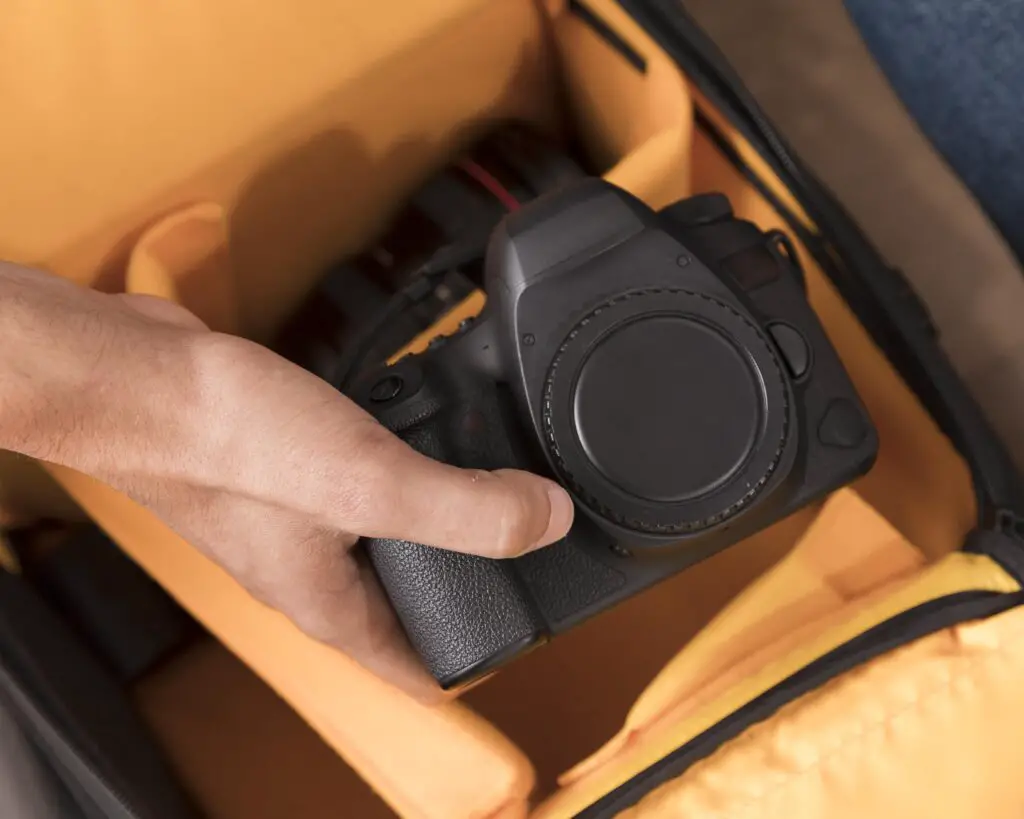
Place the wrapped lens in a smaller, sturdy box, filling any gaps with packing peanuts or crumpled paper to prevent movement.
Then, place this smaller box into a larger box lined with more packing material, ensuring at least two inches of cushioning around all sides. Seal both boxes securely with strong packing tape.
Label the outer box as “Fragile” and “Handle with Care.” This method provides excellent shock absorption and minimizes the risk of damage from impacts.
2. Foam Inserts Method
Foam inserts offer customized protection by conforming to the shape of the lens. Start by selecting a sturdy box that fits the lens snugly.
Cut foam inserts to fit the box dimensions, then cut out a cavity in the foam that matches the shape of the lens. Wrap the lens in bubble wrap for additional protection, then place it into the foam cavity.
Here, what do you use on a bike as a camera bag?
Add a top layer of foam to cover the lens completely. Seal the box securely with packing tape and label it as “Fragile.” Foam inserts provide precise cushioning, reducing the risk of movement and impact damage during shipping.
3. Hard Case Method
Using a hard case designed for camera equipment is one of the safest methods for shipping a lens. These cases are built to withstand rough handling and harsh conditions.
First, place the lens inside the hard case, ensuring it fits securely within the pre-cut foam compartments. If the case does not have custom foam, wrap the lens in bubble wrap and fill the case with additional padding. Close the case and secure it with its locking mechanisms.
Place the hard case into a larger cardboard box, adding extra packing material around it. Seal the outer box with strong tape and label it as “Fragile.” Hard cases provide maximum protection against impacts and environmental hazards.
4. Molded Pulp Packaging Method
Molded pulp packaging is an eco-friendly and effective method for shipping delicate items like camera lenses. Start by wrapping the lens in bubble wrap for initial protection.
Place the wrapped lens into a molded pulp tray designed to fit its shape. These trays absorb shocks and distribute pressure evenly. Insert the tray into a sturdy box, filling any remaining spaces with additional molded pulp or other cushioning materials.
Seal the box securely with packing tape and mark it as “Fragile.” Molded pulp packaging is biodegradable and provides excellent protection by cradling the lens and minimizing movement.
5. Air Cushion Packaging Method
Air cushion packaging uses inflatable air cushions to protect the lens during shipping. First, wrap the lens in bubble wrap for initial protection.
Place the wrapped lens into a box, then fill the box with inflated air cushions. Ensure the lens is surrounded on all sides, preventing any movement. The air cushions absorb shocks and provide a lightweight yet effective barrier against impacts.
Seal the box securely with strong packing tape and label it as “Fragile.” This method is versatile and cost-effective, offering good protection while being lightweight, which can reduce shipping costs.
Air cushions are also reusable and can be easily adjusted to fit various box sizes and shapes.
5 Benefits to pack a camera lens for shipping
1. Protection Against Damage
Packing a camera lens properly for shipping significantly reduces the risk of damage.
Lenses are delicate instruments with intricate glass elements and precision mechanisms that can be easily damaged by impacts, pressure, or environmental factors.
Using appropriate packing materials like bubble wrap, foam inserts, or hard cases provides cushioning and shock absorption, safeguarding the lens from potential harm during transit.
This protection ensures that the lens arrives in perfect working condition, avoiding costly repairs or replacements.
2. Preservation of Value
A well-packed camera lens maintains its value by arriving in pristine condition.
Whether you’re selling the lens, sending it for repairs, or transporting it for personal use, preserving its condition is crucial. Scratches, dents, or other damage can significantly decrease the lens’s resale value.
Proper packing prevents such damage, ensuring the lens retains its market value and aesthetic appeal. This is particularly important for high-end or collectible lenses where value retention is critical.
3. Professionalism and Trust
When shipping a camera lens, especially in a business context, professional packing demonstrates care and reliability. Clients, customers, or recipients will appreciate the effort taken to ensure the lens arrives safely.
This attention to detail builds trust and enhances your reputation, showing that you take your business seriously and value the items you handle.
Professional packing practices can lead to repeat business, positive reviews, and stronger customer relationships.
4. Peace of Mind
Properly packing a camera lens for shipping provides peace of mind.
Knowing that you have taken the necessary steps to protect the lens allows you to send it without worrying about potential damage during transit.
This peace of mind is invaluable, particularly for expensive or irreplaceable lenses.
It eliminates the stress associated with shipping delicate items and ensures a smoother, more confident shipping experience.
5. Compliance with Shipping Standards
Proper packing ensures compliance with shipping carrier standards and guidelines.
Many carriers have specific requirements for packing fragile items, and failure to meet these standards can result in denied insurance claims or additional fees. By adhering to these guidelines, you ensure that your package is handled correctly and covered by the carrier’s insurance policies.
This compliance also minimizes the risk of the package being mishandled or subjected to conditions that could cause damage.
Is it safe to ship camera lenses?
Yes, it is safe to ship camera lenses if they are properly packed and handled. Camera lenses are delicate and can be easily damaged by impacts, pressure, or environmental factors.
To ensure their safety, follow these key steps:
- Clean and Cap: Clean the lens and securely attach the front and rear lens caps.
- Bubble Wrap: Wrap the lens in multiple layers of bubble wrap for cushioning.
- Sturdy Inner Box: Place the wrapped lens in a small, sturdy box, filling gaps with packing peanuts or crumpled paper.
- Outer Box with Padding: Put the small box into a larger box with additional padding on all sides.
- Seal and Label: Seal the outer box with strong packing tape and label it as “Fragile.”
Using reputable shipping services and considering insurance for high-value lenses adds extra security. By taking these precautions, you can safely ship camera lenses without worrying about damage.
How to post a camera lens?
To post a camera lens safely, follow these steps:
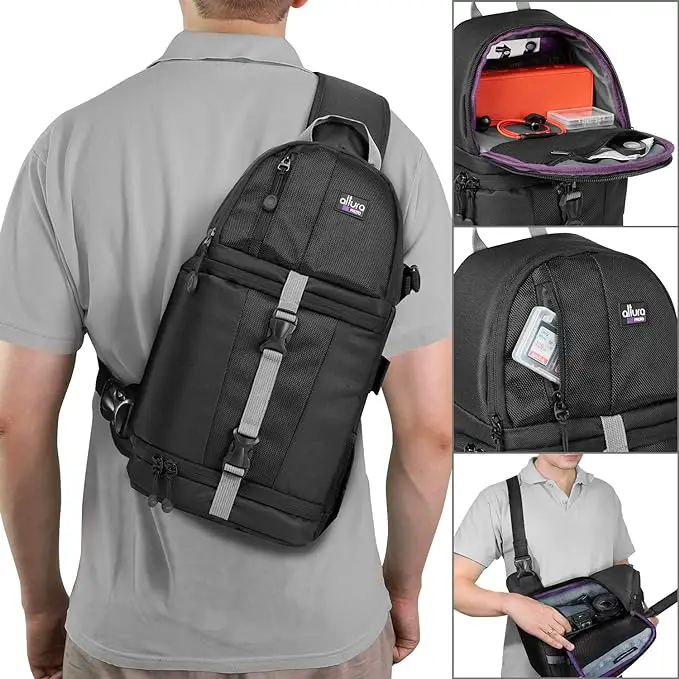
- Clean and Cap: Clean the lens and ensure both front and rear caps are securely attached.
- Wrap in Bubble Wrap: Wrap the lens in multiple layers of bubble wrap, focusing on cushioning the glass elements.
- Use a Small Sturdy Box: Place the wrapped lens in a small, sturdy box, filling any gaps with packing peanuts or crumpled paper to prevent movement.
- Prepare the Outer Box: Choose a larger box and line it with additional cushioning material.
- Insert and Pad: Place the small box into the larger box, surrounding it with more padding on all sides.
- Seal Securely: Use strong packing tape to seal the outer box thoroughly.
- Label as Fragile: Clearly mark the outer box with “Fragile” and “Handle with Care” labels.
- Choose a Reliable Carrier: Select a reputable shipping service and consider purchasing insurance for added protection.
These steps ensure the lens is well-protected and safely delivered.
How do you transport camera lenses?
Transporting camera lenses requires careful handling to prevent damage. Here are essential steps:
- Use a Camera Bag or Case: Invest in a padded camera bag or case designed to protect lenses from bumps and shocks.
- Secure Lens Caps: Always keep both front and rear lens caps securely attached to protect the glass elements from scratches and dust.
- Wrap in a Lens Pouch: For added protection within the camera bag, use a lens pouch made of soft, padded material.
- Pack Vertically: Store lenses vertically in your bag or case to minimize the risk of them shifting or rolling during transport.
- Avoid Extreme Temperatures: Keep lenses away from extreme heat or cold to prevent damage to internal components and lens coatings.
- Handle with Care: When transporting outside of a bag or case, hold lenses by the barrel rather than the glass to avoid fingerprints and potential drops.
- Use Lens Straps: If carrying multiple lenses, consider using lens straps or dividers within your bag to keep them separated and secure.
Following these guidelines ensures your camera lenses remain safe and in optimal condition during transportation.
Related faq’s
What materials do I need to package a camera lens for shipping?
You will need bubble wrap, packing peanuts or crumpled paper, sturdy boxes (both inner and outer), strong packing tape, and “Fragile” labels.
Should I clean the camera lens before shipping it?
Yes, cleaning the lens before shipping removes dust and debris that could potentially scratch the glass. Use a microfiber cloth and lens cleaning solution.
How should I wrap the camera lens for shipping?
Wrap the lens in multiple layers of bubble wrap, focusing on the glass elements. Secure the bubble wrap with tape to prevent it from unwrapping during transit.
Is it necessary to use a specific box for shipping a camera lens?
Yes, use a small, sturdy box that fits the wrapped lens snugly. Fill any empty spaces with packing peanuts or crumpled paper to prevent movement.
How do I ensure the camera lens doesn’t get damaged during shipping?
Proper packing is key. Use cushioning materials like bubble wrap and packing peanuts, secure the box with strong tape, and label it as “Fragile” to alert handlers.
Should I purchase insurance when shipping a camera lens?
It’s advisable, especially for valuable lenses. Shipping insurance covers the cost of repair or replacement if the lens is lost or damaged during transit.
What should I do if the camera lens is too large for standard shipping boxes?
Consider using a specialized shipping company that handles oversized items, or inquire about custom packaging solutions from shipping carriers.
Conclusion
In conclusion, properly packaging a camera lens for shipping is crucial to ensure its safe arrival at its destination.
By following meticulous steps such as cleaning the lens, securely wrapping it in bubble wrap, using appropriate boxes and padding, and labeling it as fragile, you significantly reduce the risk of damage during transit.
Taking these precautions not only protects the lens from physical harm but also helps maintain its value and functionality.
Whether shipping for personal or professional reasons, investing time and care in packaging ensures that the lens reaches its recipient in optimal condition.

